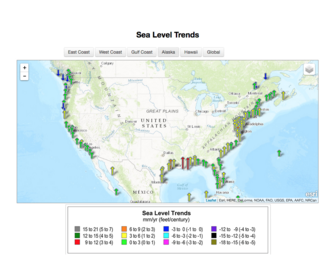Science Source
Water and energy budgets of hurricanes: Case studies of Ivan and Katrina
- Explores the role of hurricanes in the climate system
- Conducts a detailed analysis of the bulk atmospheric moisture budget of Ivan in September 2004 and Katrina in August 2005 from simulations with the Weather and Research Forecasting (WRF) model at 4 km resolution without parameterized convection
- Finds that heavy precipitation exceeding 20 mm (0.8 in) per hour in the storms greatly exceeds the surface flux of moisture through evaporation
- Finds that vertically integrated convergence of moisture in the lowest 1 km of the atmosphere from distances up to 1600 km is the dominant term in the moisture budget, highlighting the importance of the larger-scale environment
- Runs simulations for the Katrina case with sea surface temperatures (SSTs) increased by +1°C and decreased by −1°C as sensitivity studies
- Finds that for hours 42 to 54 after the start of the simulation, maximum surface winds increased about 4.5 meters per second (9%), and sea level pressure fell 11.5 hPa per 1°C increase in tropical SSTs
- Finds that, overall, the hurricane expands in size as SSTs increase, the environmental atmospheric moisture increases at close to the Clausius-Clapeyron equation value of about 6% K−1 and the surface moisture flux also increases mainly from Clausius-Clapeyron effects and the changes in intensity of the storm
- Concludes that the environmental changes related to human influences on climate since 1970 have increased SSTs and water vapor, and the results suggest how this may have altered hurricanes and increased associated storm rainfalls, with the latter quantified to date to be of order 6 to 8%
Related Content
Real Time Data

Apr 1, 2016 | NOAA Tides and Currents
US Sea Level Trends
Science Source
| Climatic Change
Simulations of Hurricane Katrina (2005) under sea level and climate conditions for 1900
Jennifer L. Irish, Alison Sleath, Mary A. Cialone et al
Science Source
| Proceedings of the National Academy of Sciences
Homogeneous record of Atlantic hurricane surge threat since 1923
Aslak Grinsted, John C. Moore, Svetlana Jevrejeva
Science Source
| Environmental Impact Assessment Review
Tropical cyclone losses in the USA and the impact of climate change
Silvio Schmidta, Claudia Kemfertb, Peter Höppe


